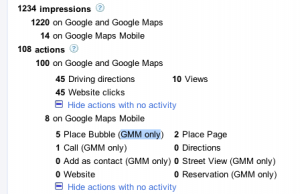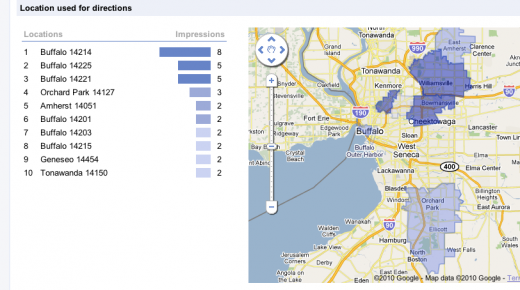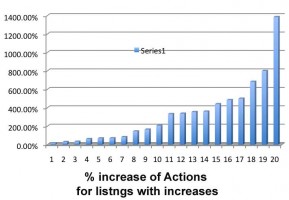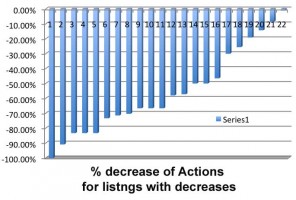Thanks to e-mphasis Internet Marketing for pointing out the increased detail that Google Places is now including in the Dashboard Analytics.
Google is not only providing a breakout of desktop vs. mobile activity but is showing a great deal of additional detail in the mobile environment. Note the inclusion of “Add as Contact” and “Reservation”. Is Google planning a reservation service near term?
They have changed the layout, making QR codes and the event posting option more obvious by moving them to the left upper screen quadrant.
There are more date ranges for summary analysis including the ranges today, yesterday, this month, last month and different starts to the week. The implication of this is that this data will be in near real time, allowing for a much more timely view of the affects of promotions.
Most of the analytics also have an added +Show More Search Queries feature that allows the showing 10 results for each segment rather than 5.
In addition to showing where driving directions were requested from Google is also showing locations used in searches for your business which offers a more granular (if still not complete view) of the geo modifiers used in the search phrase. The map showing locations has added more visual detail as well
The new analytics is a welcome improvement over the old one. There are still things that could improve (why only show 10 keywords? why show keywords separate from geography?). Accuracy is still suspect as in my example Impressions and Actions were highest on the desktop but the numbers for terms used were shown as significantly higher on mobile.
Certainly having the granular mobile information, the apparent real time or near real time information, the more flexible date ranges and dramatically improved maps are significant upgrades. Not only do the changes provide an SMB with better understanding of the actions of her clients, they clearly point out the every increasing role of mobile and make its impact both numerically and visually obvious for all to see.
And just what does the word “Reservation” refer to?



